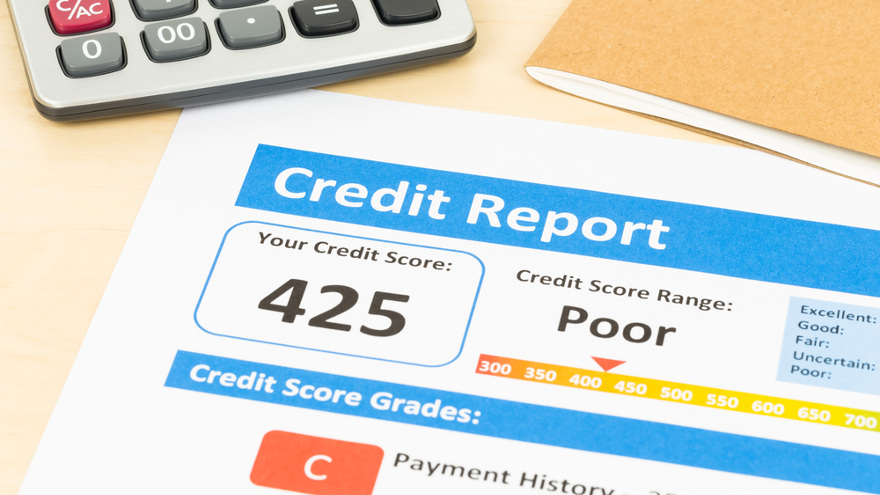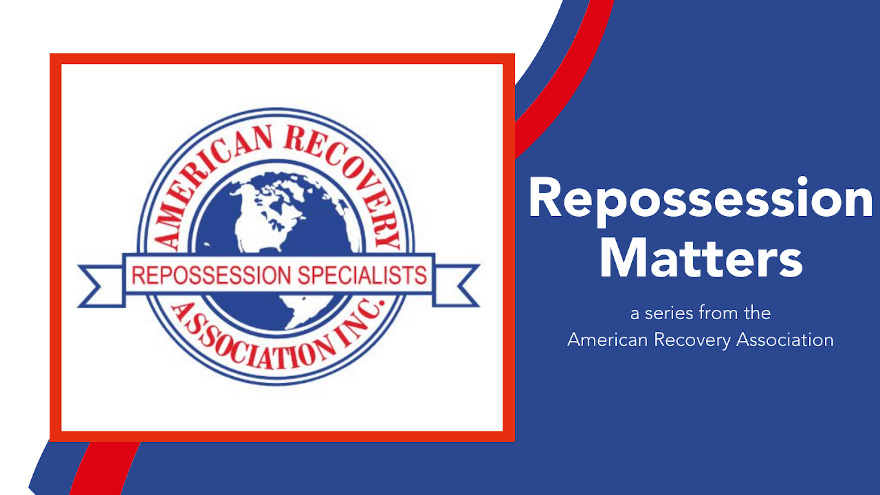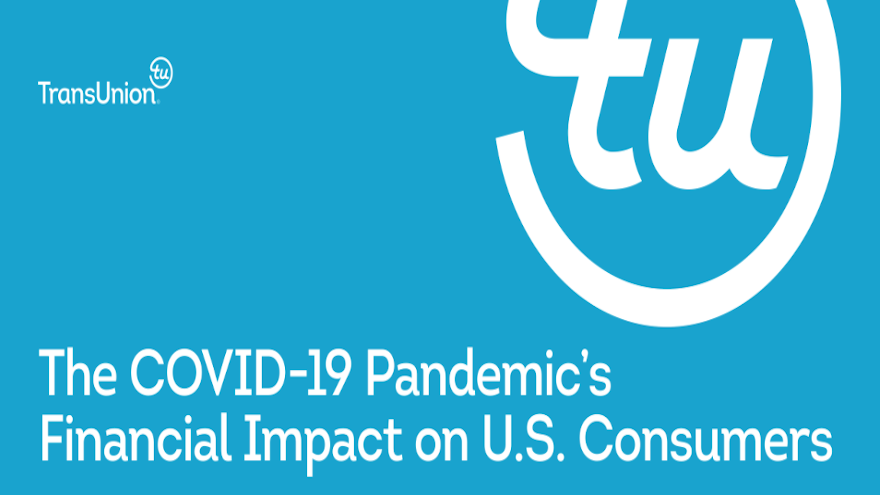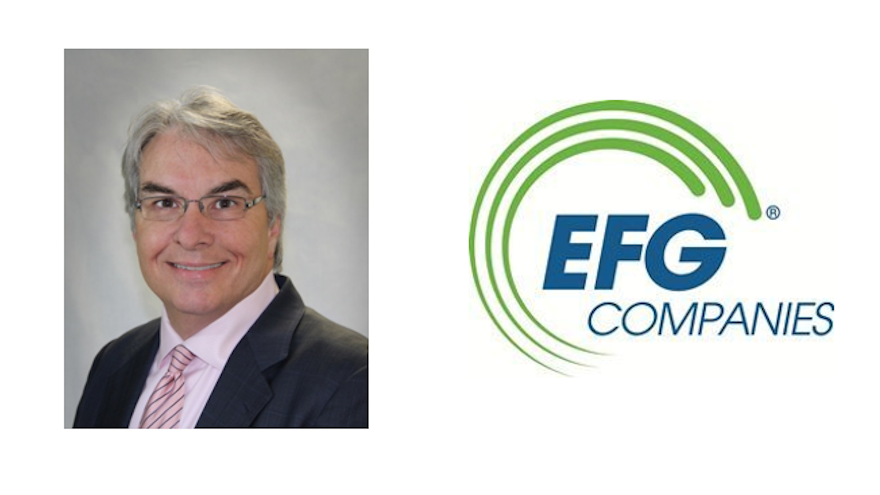Well, here comes another automotive industry statistic establishing an all-time reading during the coronavirus pandemic.
Findings from Experian’s Q2 2020 State of the Automotive Finance Market report release on Thursday morning indicated that the amount of financing originated during the second quarter that fell into subprime represented an all-time low. Analysts determined just 22.18% of the total financing booked in Q2 were subprime or deep subprime.
Experian classifies subprime and deep subprime as individuals with credit scores of 600 and lower.
At the midpoint of last year, Experian reported subprime and deep subprime financing constituted 23.41% originated during Q2. The recent high in the report’s data set going back eight years came in Q2 2013 when 28.32% of all financing was classified in the lowest credit tiers.
Experian also discovered that the overall amount of financing coming through the industry pipeline declined during the second quarter, reflecting the significant slowdown in retail vehicle transactions when stay-at-home orders arrived this spring.
Analysts determined the percentage of new vehicles with financing dropped from 87.62% in Q2 2019 to 85.54% in Q2 2020, while the percentage of used vehicles with financing decreased from 40.33% to 36.75% over the same period.
However, Experian emphasized that much of the overall decrease can be attributed to the early months of the pandemic. Analysts pointed out that in April their information showed new-vehicle sales fell 50.8% year-over-year, while used vehicle sales plummeted 54.0%.
In June, Experian highlighted that new- and used-vehicle sales rebounded as its data noted that new-vehicle sales were off only 10.6%, while used-vehicle sales actually increased by 0.2% compared to 2019.
“COVID-19 has impacted the industry, but the data shows manufacturers, dealers and lenders have adjusted to the current landscape,” Experian senior director of automotive financial solutions Melinda Zabritski said in a news release.
“For example, manufacturer incentives have helped new-car sales rebound over the past few months,” Zabritski continued. “The more the industry can stay on top of the trends, the better positioned they will be to continue to boost sales and navigate the recovery.”
With the option for consumers to take advantage of manufacturer incentives, Zabritski noted that she’s seen consumers with strong credit shift back into the new-vehicle market, reversing a trend she and her team have observed over the past several quarters.
Experian indicated prime and super-prime consumers made up 74.96% of new-vehicle financing in Q2 2020, up from 71.89% in Q2 2019. The report also showed that captives made up the largest share of new-vehicle financing (31.1%), up from 28.6% in Q2 2019.
Meanwhile, finance companies are absorbing more risk in order to keep payments manageable for their customers.
Experian found that the average amount financed for a new vehicle reached $36,072 in Q2, an increase of nearly $4,000 from a year ago. Analysts explained much of the increase appears to be driven by a shift in consumer preference.
During the quarter, Experian discovered full-size pickups became the most popular vehicle segment, making up 16.09%, followed closely by small SUVs at 14.33%.
“These vehicles tend to be more expensive,” Experian said while adding that the average amount financed for a full-size pickup in Q2 was $46,502.
Analysts pointed out the increase in the average amount financed for a used vehicle was much smaller, rising $760 from a year ago to reach $20,916.
Despite the increases in the average amount financed, Experian noticed the average monthly payments remained fairly steady.
Analysts indicated the average monthly payment for a new vehicle was $568, an increase of $18 from the previous year, while the average monthly payment for a used vehicle increased $5, bringing it to $397.
The limited increase in average monthly payment is likely attributed to the increase in the average term. For a new vehicle, the average came in at 71.54 months, up from 69.17 months in Q2 2019, while the average term for a used vehicle ticked up to 65.30 months from 64.82 months spotted in Q2 of last year.
Experian said that it’s important to note that the percentage of new-car contracts with terms between 85 and 96 months increased from 1.3% in Q2 2019 to 4.8% in Q2 of this year —with many of these deals extended to consumers with prime credit scores at 720 and higher.
In addition, analysts noticed that average interest rates for new vehicles decreased from 6.27% in Q2 2019 to 5.15% in Q2 2020. Similarly, average interest rates for used vehicles softened from 10.07% to 9.69% during the same time period.
“With vehicle loans becoming more expensive, we’ve seen lenders and consumers find ways to make monthly payments more affordable — relying on lower interest rates and extending loan terms,” Zabritski said.
“Lenders need to minimize risk and find finance options that meet the needs of car shoppers. Ensuring loans are affordable and fit within the consumers’ budgets will be a priority,” she went on to say.
A few other findings for Q2 from Experian included:
— Leasing saw a decrease year-over-year, making up 25.81% of new vehicles in Q2 2020, compared to 32.03% in Q2 2019.
— Hondas are the most commonly leased vehicle at 13.55% of the market.
The average credit score for new-vehicle financing increased four points year-over-year from 717 in Q2 2019 to 721 in Q2 2020. The average score for used-vehicle inched one point higher from 656 to 657.
To watch a webinar when Zabritski goes into more detail about the Q2 2020 State of the Automotive Finance Market report, register on this website.
The American Recovery recently rolled out its latest informational initiative since the coronavirus pandemic began.
The newest project is a new whitepaper series titled, “Repossession Matters,” as ARA said it will be addressing issues and presenting revenue models to allow for repossession agencies to operate in a viable and sustainable manner.
“In light of the ongoing struggles in our industry, now magnified by the pressure of COVID-19, ARA has been assessing, researching and creating content in order to put forth a clear argument for radical change within the pricing structures of our industry. These changes are long overdue and will ultimately benefit all parties throughout the industry,” ARA said.
“For many years now, we have been bankrupting ourselves thanks to the inability of repossession agents, lenders and forwarders to come together and address issues head-on,” the association continued.
“The goal of the Repossession Matters series will be to raise understanding among us and lead with one clear voice as an industry — something that up until this point has not been achieved,” ARA went to say.
The opening segment focuses on what the association described as the “true” cost and potential risk surrounding personal property fees.
“Every day, members of our industry put themselves at risk handling potentially hazardous materials from recovered vehicles and dealing with personal property from repossessed vehicles is one of the most difficult aspects of the recovery professional service, making it even more important to charge the correct fees for handling belongings,” ARA said.
“At ARA, we are confident that by combatting challenges with the entire industry in mind, we can bring about mutually beneficial industry changes and unify our voice as one,” the association added.
The opening series segment can be found on this website.
While bankruptcy filings have either remained stable or even below year-ago readings so far during a turbulent 2020, experts caution that filings could increase as financial difficulties continue from the coronavirus pandemic.
To help finance companies consider the potential ramifications if a jump in contracts in their portfolios get pulled into bankruptcy proceedings, Kelley Kronenberg partner Dennis LeVine shared his perspectives during this podcast.
To hear the entire conversation with LeVine, who specializes in bankruptcy litigation and creditors’ rights, click on the link available below, or visit the Auto Remarketing Podcast page.
Download and subscribe to the Auto Remarketing Podcast on iTunes or on Google Play.
Not only are finance-company leaders likely are thinking of the health of themselves as well as well their family, friends, employees and customers, but also the condition of their outstanding portfolio.
In an attempt to aid the status of the last segment on that list, Wolters Kluwer’s Lien Solutions is hosting an informational webinar on Wednesday titled, “Practicing Sound Loan Management in a COVID World.”
Beginning at 2 p.m. ET, experts plan to share perspectives and practical tips on managing portfolios in the wake of the pandemic’s broad economic impacts.
Scheduled to present is Robert Inskeep, who spent 33 years as a national bank examiner at the Office of the Comptroller of the Currency (OCC).
Inskeep will share insights on how lenders can protect themselves by improving loan portfolio management practices, tightening controls and performing self-assessments. He will also explore the Interagency examiner guidance and offer practical tips, from an OCC examiner’s perspective, on the potential consequences of poor execution of policies and procedures as banks deal with auto-financing challenges amid the COVID-19 pandemic.
Also on the agenda is Wolters Kluwer’s Rick Vanko, senior product manager for iLien Motor Vehicle Solutions. He will share advice on how to protect and perfect one’s motor vehicle collateral by addressing any possible loan exceptions, including managing the costs of those exceptions.
“While the regulatory and legal obligations behind auto lending remain unchanged, the ways in which lenders are adapting to operate in a disrupted economy present unexpected challenges. The increasing volume of loan defaults and car repossessions means significant challenges for lenders in managing higher loan portfolio risk while maintaining compliance with banking laws and regulations,” Wolters Kluwer said.
Registration of the webinar can be completed on this website.
REPAY chief revenue officer Susan Perlmutter explained how collections departments likely are doing even more hand-holding as this turbulent year continues.
During this episode of the Auto Remarketing Podcast, Perlmutter also described the potential scenes inside finance companies nowadays as executives and managers work with struggling customers while also trying to keep the firm’s viability intact.
To listen to the entire conversation, click on the link available below, or visit the Auto Remarketing Podcast page.
Download and subscribe to the Auto Remarketing Podcast on iTunes or on Google Play.
TransUnion updated the industry on multiple fronts on Thursday, giving the latest reading not only on delinquencies but also the total percentage of accounts in “financial hardship.”
As auto-finance 60-day delinquencies made a notable upturn during the second quarter — especially among finance companies that might have subprime paper in their portfolio — TransUnion reported accounts with that “financial hardship” status dropped in July, marking the first such decrease since the start of the COVID-19 pandemic.
The report defines accounts in financial hardship by factors such as a deferred payment, forbearance program, frozen account or frozen past due payment.
TransUnion found that while fewer accounts are in financial hardship status as of late, analysts indicated overall credit performance has continued to hold steady and has not shown a material deterioration.
To gain greater insight into the performance and payment behaviors of consumers during the COVID-19 pandemic, TransUnion has supplemented its quarterly Q2 2020 Industry Insights Report with its Monthly Industry Snapshot Report, highlighting the consumer credit market for the month of July.
“Overall, the consumer credit market has been performing quite well despite the obvious challenges brought on by the COVID-19 pandemic,” TransUnion vice president of research and consulting Matt Komos said in a news release.
“It’s a reassuring sign that delinquency levels have remained relatively low — especially as the percentage of consumers in financial hardship status has started to decline,” Komos continued. “While we still expect to see future delinquencies rise based on macroeconomic factors, it is clear that government stimulus programs and accommodation programs provided by lenders are helping the market withstand these challenges in the near-term.”
Accounts in Financial Hardship Status Declining
| Timeframe |
Auto |
Credit Card |
Mortgage |
Personal Loans |
| July 2020 |
6.16% |
2.83% |
6.15% |
6.92% |
| June 2020 |
7.20% |
3.57% |
6.79% |
7.03% |
| May 2020 |
7.04% |
3.73% |
7.48% |
6.15% |
| April 2020 |
3.54% |
3.22% |
5.00% |
3.57% |
| March 2020 |
0.64% |
0.01% |
0.48% |
1.56% |
| July 2019 |
0.41% |
0.01% |
0.75% |
0.25% |
* TransUnion’s financial hardship data includes all accommodations on file at month’s end, and includes any accounts that were in accommodation prior to the COVID-19 pandemic. Source: TransUnion.
More details about auto financing
Looking specifically at auto financing, TransUnion pointed out that providers began tightening their underwriting criteria as performance started to show initial signs of deterioration during the second quarter.
TransUnion found that consumer-level delinquencies — 60 days or more past due — reached 1.50% in Q2, an increase of 27 basis points from year-ago quarter and the largest such increase from the previous 11 quarters.
While overall delinquencies saw an uptick, analysts noticed that banks, captives and credit unions have experienced a downward monthly trend in delinquency since the pandemic began.
Conversely, independent finance companies — which oftentimes book subprime paper — have been experiencing a monthly increase in 60-day delinquency, according to TransUnion.
Analysts explained this recent deterioration in performance, along with economic stressors presented by the COVID-19 pandemic, has resulted in finance-company pullback across all risk tiers, but has been primarily driven by subprime and near prime.
TransUnion reported that overall originations declined 5.8% year-over-year for a total of 6.3 million new contracts.
“Traditionally auto loans have been a payment that consumers make even in times of economic distress as a vehicle is the main source of transportation and the lifeblood for many consumers in their daily lives,” said Satyan Merchant, senior vice president and automotive business leader at TransUnion.
“While there has been some recent deterioration in terms of auto performance, this may be the result of consumers having less cash flow as stimulus funds begin to run out,” Merchant continued in a news release. “Lenders are likely to continue monitoring delinquency levels — especially as accommodations expire or stimulus benefits run out — to determine future risk mitigation strategies across the portfolio.”
Q2 2020 Auto Loan Trends
| Auto Lending Metric |
Q2 2020 |
Q2 2019 |
Q2 2018 |
Q2 2017 |
| Number of Auto Loans |
83.5 million |
82.7 million |
80.9 million |
77.4 million |
| Borrower-Level Delinquency Rate (60+ DPD) |
1.50% |
1.23% |
1.22% |
1.23% |
| Average Debt Per Borrower |
$19,457 |
$18,974 |
$18,700 |
$18,486 |
| Prior Quarter Originations* |
6.3 million |
6.7 million |
6.8 million |
6.7 million |
| Average Balance of New Auto Loans* |
$22,372 |
$21,418 |
$20,901 |
$20,415 |
*Note: Originations are viewed one quarter in arrears to account for reporting lag. Source: TransUnion
Additional insights about financial hardship
TransUnion acknowledged the percentage of accounts in financial hardship appeared to hit their peak during the months of May and June, a time when many consumers were feeling the combined impacts of reduced work hours, shelter-in-place orders, unemployment and dwindling stimulus funds.
Analysts explained the recent reduction in account hardship levels may indicate that the number of consumers in financial distress has leveled off as performance for these products has maintained steady levels.
TransUnion reported serious delinquencies (60 to 90 days past due) showed a month-over-month improvement from June to July across most credit products. Credit card, mortgage and personal loans also showed a substantial year-over-year decline in delinquency compared to performance in July of last year.
“The presence of federal programs and those provided by lenders, however, may have alleviated some of the financial hardship borrowers are facing,” TransUnion said.
| July Industry Snapshot of Consumer-Level Delinquency Performance by Credit Product |
| Percentage of Borrowers 60 or More Days Past Due (DPD) |
| Timeframe |
Auto |
Credit Card |
Mortgage |
Personal Loans |
| July 2020 |
1.43% |
1.37%* |
1.08% |
2.79% |
| June 2020 |
1.50% |
1.48%* |
1.07% |
3.11% |
| July 2019 |
1.31% |
1.61%* |
1.41% |
3.10% |
| Percentage of Borrowers 30 or More Days Past Due (DPD) |
| Timeframe |
Auto |
Credit Card |
Mortgage |
Personal Loans |
| July 2020 |
3.00% |
2.58% |
1.81% |
3.77% |
| June 2020 |
3.17% |
2.66% |
1.83% |
4.34% |
| July 2019 |
3.74% |
3.52% |
2.68% |
4.6% |
*Credit card delinquency rate reported as 90+ DPD per industry standard; all other products reported as 60+ DPD. Source: TransUnion.
TransUnion went on to mention that another positive sign from the report can be found via the 30-day delinquency metric, typically an early red flag that an account will default and potentially be charged off. These delinquency levels have shown signs of improvement in the month of July across auto, credit card, mortgage and personal loans compared to June as well as one year ago.
Despite this indication that consumers are not falling behind on payments, TransUnion noted that consumers are still expressing concern about their ability to pay bills.
TransUnion’s latest Financial Hardship Survey from late July found that 57% of Americans have been financially impacted by the COVID-19 pandemic. Of those consumers, 77% said they are concerned about their ability to pay bills and loans. They expect they will not be able to pay their bills or loans in about six weeks and anticipate an average budget shortfall of around $875.
The level of concern is now at its highest level since TransUnion began tracking this variable in late March.
“As more accounts come out of financial hardship status, lenders will be actively monitoring payment behaviors to gauge whether consumers can withstand these economic pressures and do so without government assistance or lender support. How consumers are able to manage debt levels and access to credit will be a key indication of economic recovery in the coming months,” Komos said.
TransUnion’s Q2 2020 Industry Insights Report and Monthly Industry Snapshot Report features insights on consumer credit trends around personal loans, auto financing, credit cards and mortgage loans.
For more information, managers can register for the TransUnion Q2 2020 IIR Webinar on this website. Additional resources for consumers looking to protect their credit during the COVID-19 pandemic can be found at transunion.com/covid-19.
Just like when weather forecasters watch for hurricanes to make a turn toward land this time of year, finance company leaders likely have been eyeing for when defaults would make an industry-wide move higher because of the coronavirus pandemic.
According to data through July released on Tuesday by S&P Dow Jones Indices and Experian, that turn has arrived.
The auto portion of the S&P/Experian Consumer Credit Default Indices showed the metric rose 7 basis points in July on a sequential basis to land at 0.47%, representing the reading’s first uptick in nearly a year.
The reading edged up 2 basis points from August to September to land at 1.05% and has drifted lower since that point, dropping to a 10-year low in June at 0.40% as finance companies aided struggling contract holders with an array of modifications since COVID-19 arrived back in March.
Meanwhile, S&P and Experian reported that their composite rate — which represents a comprehensive measure of changes in consumer credit defaults — remained unchanged in July at 0.66%, a record low according to the firms’ data going back 10 years.
For comparison, the composite rate in July 2010 stood at 3.42%.
Also of note among the newest readings, analysts said the bank card default rate fell 37 basis points in July to 3.86%, while the first mortgage default rate ticked up 3 basis points higher to come in at 0.44%.
Turning to a review of the July data from the five largest metropolitan areas, S&P and Experian found three readings moved higher when compared to the previous month.
Miami posted the largest increase, jumping 43 basis points to 1.83%. New York rose 12 basis points higher to come in at 0.86%, while Los Angeles edged 3 basis points to land at 0.75%.
Analysts pointed out Dallas declined 5 basis points to settle at 0.61%, and Chicago dipped 2 basis points lower to close at 0.67%.
Jointly developed by S&P Indices and Experian, analysts noted the S&P/Experian Consumer Credit Default Indices are published monthly with the intent to accurately track the default experience of consumer balances in four key loan categories: auto, bankcard, first mortgage lien and second mortgage lien.
The indices are calculated based on data extracted from Experian’s consumer credit database. This database is populated with individual consumer loan and payment data submitted by lenders to Experian every month.
Experian’s base of data contributors includes leading banks and mortgage companies and covers approximately $11 trillion in outstanding loans sourced from 11,500 lenders.
EFG Companies president and chief executive officer John Pappanastos returned to the Auto Remarketing Podcast to elaborate about the company’s updated 2020 predictions for the retail automotive and F&I market.
As the U.S. economy experiences the pandemic-driven downturn, EFG predicts continued softness in light-vehicle sales with greater downside performance risk than upside opportunity. While economic challenges may persist for the remainder of the year, EFG also sees evidence that dealerships are successfully managing the impact, and strength in F&I is boosting revenue.
To listen to the entire conversation, click on the link available below, or visit the Auto Remarketing Podcast page.
Download and subscribe to the Auto Remarketing Podcast on iTunes or on Google Play.
The investment community is maintaining close observations on subprime auto financing.
S&P Global Ratings on Monday said that its ratings on 27 classes from 20 U.S. subprime auto ABS transactions will remain on CreditWatch, where they were placed with negative implications on May 12. The finance companies connected with these transactions include:
— American Credit Acceptance
— Consumer Portfolio Services
— DriveTime Automotive
— Exeter Finance
— First Investors Financial Services
— Flagship Credit Acceptance
— Global Lending Services
— Prestige Financial Services
— Sierra Auto Finance
— Westlake Financial Services
“We are continuing to assess the impact of the COVID-19 pandemic on collateral performance, including the impact of extension rates, delinquencies, recovery rates and net losses, on these transactions,” analysts said in a news release.
“The CreditWatch listings reflect the COVID-19 economic downturn, which we expect to negatively affect the performance of all auto loan originators and lead to higher cumulative net losses and reduced excess spread over the life of each transaction. As a result, the tranches placed on CreditWatch may not have sufficient enhancement to support the current ratings,” they continued.
S&P Global Ratings acknowledged a high degree of uncertainty about the evolution of the coronavirus pandemic.
“The consensus among health experts is that the pandemic may now be at, or near, its peak in some regions, but will remain a threat until a vaccine or effective treatment is widely available, which may not occur until the second half of 2021,” analysts said.
“We are using this assumption in assessing the economic and credit implications associated with the pandemic. As the situation evolves, we will update our assumptions and estimates accordingly,” they added.
S&P Global Ratings closed by noting that the firm expects to resolve its CreditWatch listings during the next 90 days, “focusing on each transaction's buildup of enhancement in comparison to potentially higher expected cumulative net losses in the context of our evolving view of the severity and duration of the COVID-19 pandemic.”
Auto dealers around the country have embraced the unthinkable during the COVID-19 pandemic. They are now offering online sales. Roughly 85% of General Motors dealers were signed up to offer the manufacturer’s “Shop Click Drive” e-commerce program by May of this year, and dealerships ranging from the massive AutoNation chain to smaller, family-owned stores have all turned to e-commerce to spark sales while their customers were following nationwide stay-at-home orders.
Now, as parts of the country begin to re-open, while others are still contending with new outbreaks of COVID-19, it appears that online sales may just stick — even after the pandemic. With online car shopping already winning rave reviews for its smooth transactions, the ability to handle trade-ins and financing seamlessly over phone and internet, and the convenience of not having to leave home, many auto shoppers may never again set foot in a dealership.
This will be a problem for dealers and lenders that don’t embrace solutions that support a fully functioning on-line credit process or are not able to promote the sales of traditional Finance and Insurance products without the F&I in dealership office.
Upsetting the conventional sales channel
For starters, there is the issue of potential lost revenue. Dealerships can generate an additional $1,400 plus in profit on each new vehicle that passes through the F&I department, through a combination of insurance products, extended warrantees and lender provided incentives. While these options can still be offered in an online sales scenario, the sales process (and financing) is completely different in an online, check-the-box environment than it is in a face-to-face dialogue with an experienced F&I manager.
The bigger issue, though, is the effect a large-scale shift to online auto sales could have on automobile financing firms.
Most lenders rely on the dealer to submit credit applications for financing on behalf of the prospective car buyer. Over the last several years, we have seen a greater number of consumers seeking their financing outside the dealership, via on-line credit applications submitted to their lender of choice. This trend does not bode well for many non-captive lenders who are not tied into the dealers and/or OEM’s shopping tools, and those that do not have online credit application processes. Pre-pandemic, captive lenders captured roughly 64% of all dealer financing volume. In March through May of this year, that share jumped to 74%.
Need for innovation in new normal
What started as a stopgap measure to spur sales during the pandemic is rapidly morphing into a new normal where dealer investments in sleek showrooms, carefully choreographed sit-downs with F&I managers and even test drives all need to be reevaluated.
The first step in that process needs to be aligning streamlined digital connectivity between preferred lenders and dealership online sales channels. Both parties will have to expedite the transition from indirect to direct lending and promote their digital capabilities. If lenders want to maintain collaborative relationships with dealers, it’s going to require more than just regular phone calls, dealership drop-ins and competitive interest rates. To play in this space, regional banks, credit unions and other financing companies that want to do more business with dealers, need to have both the front-end application process and the back-end e-contracting functionality to integrate with dealership online sales channels.
Dealerships also need to spend time thinking about the effectiveness of their hastily launched online sales channels. Say what you will about auto dealer sales practices, the art has been refined over the course of decades to maximize volume and profitability. It is no accident that the F&I manager is often one of the best salespeople in the dealership. That same deliberate approach to maximizing customer engagement and converting browsers to buyers needs to be captured in the digital sales channel. As a starting point, that will include measuring online conversion and drop-off rates, optimizing the performance of critical points in the customer journey and leveraging data on everything from online shopping trends to time-of-day behavioral patterns to make the process as effective as it can possibly be.
Talk to enough auto dealers and they will say they are in the relationship business. Repeat customers, longstanding friendships and trust built up over many years all play a major role in maintaining sales volumes. In an all-digital world, those relationships risk being commoditized. Dealers and their financing partners need to put the work in now to make sure their unique brand values and strengths translate to digital because we’re going there whether they like it or not.
Jim Houston is managing director of consumer lending and automotive finance intelligence at J.D. Power.












